Autophagy works to make new cellular building blocks in five stages
Understanding the five stages of autophagy is a key part of understanding how good health may be maintained with age.
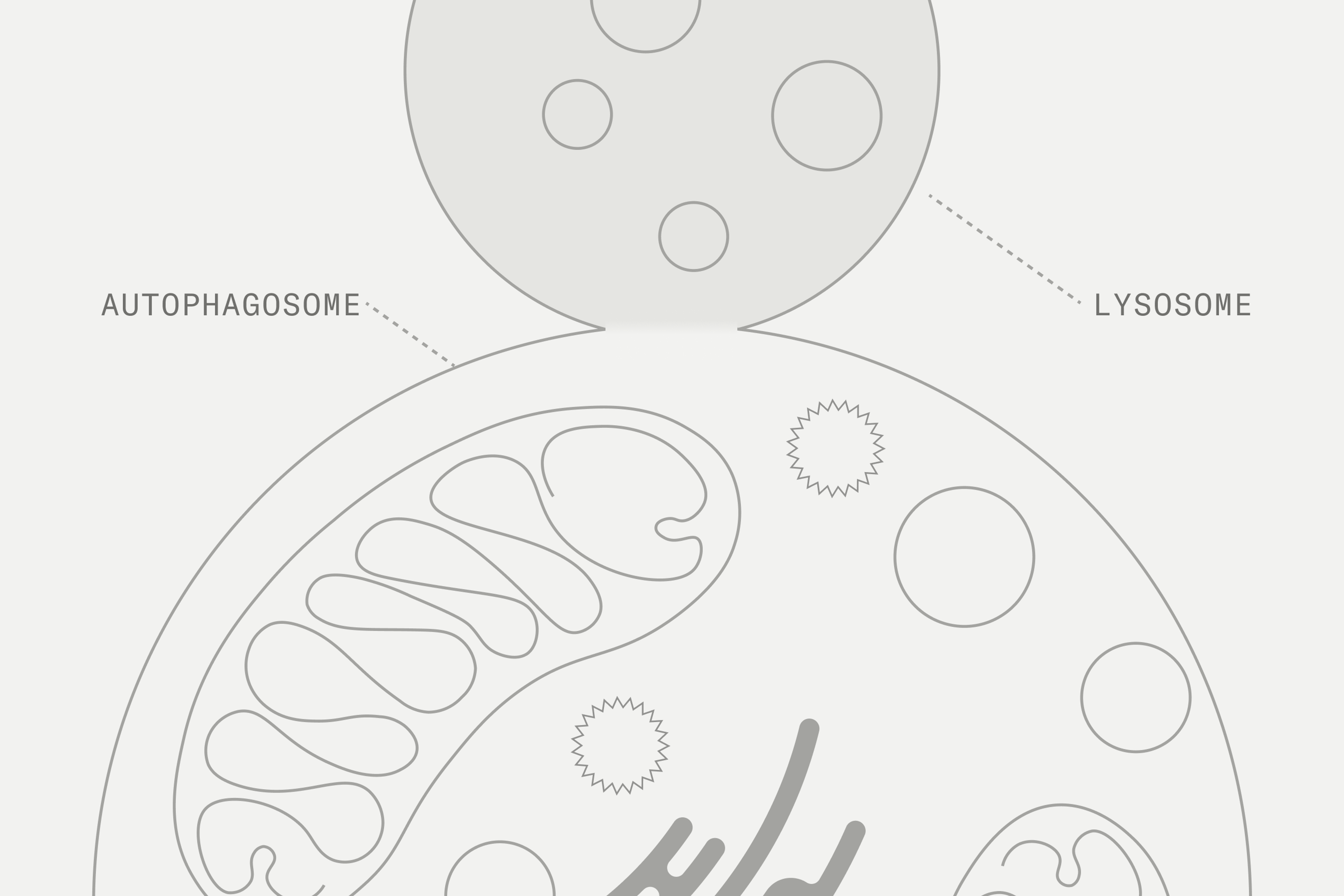
December 04, 2023
3 min read
The 5 stages of autophagy
The body is in a constant state of renewal, and the process of autophagy reflects this. Autophagy involves the breakdown and recycling of old or damaged cells and is important for healthy aging.[1] It is also an essential cellular process and produces new building blocks and energy for cellular renovation and homeostasis.
A range of substrates are broken down through this process, from proteins to bacteria. [2]It may be induced in response to nutrient deprivation, introduction of pathogens or other stressors, and in many other situations. [3]Autophagy is also activated on a day-to-day basis, between meals, in organs such as the liver to maintain its metabolic functions and supply amino acids and energy.[4]
The mechanism of autophagy can be described in a series of five stages.

Autophagy process
Understanding the 5 stages of autophagy helps shed light on how our cells respond to stress.
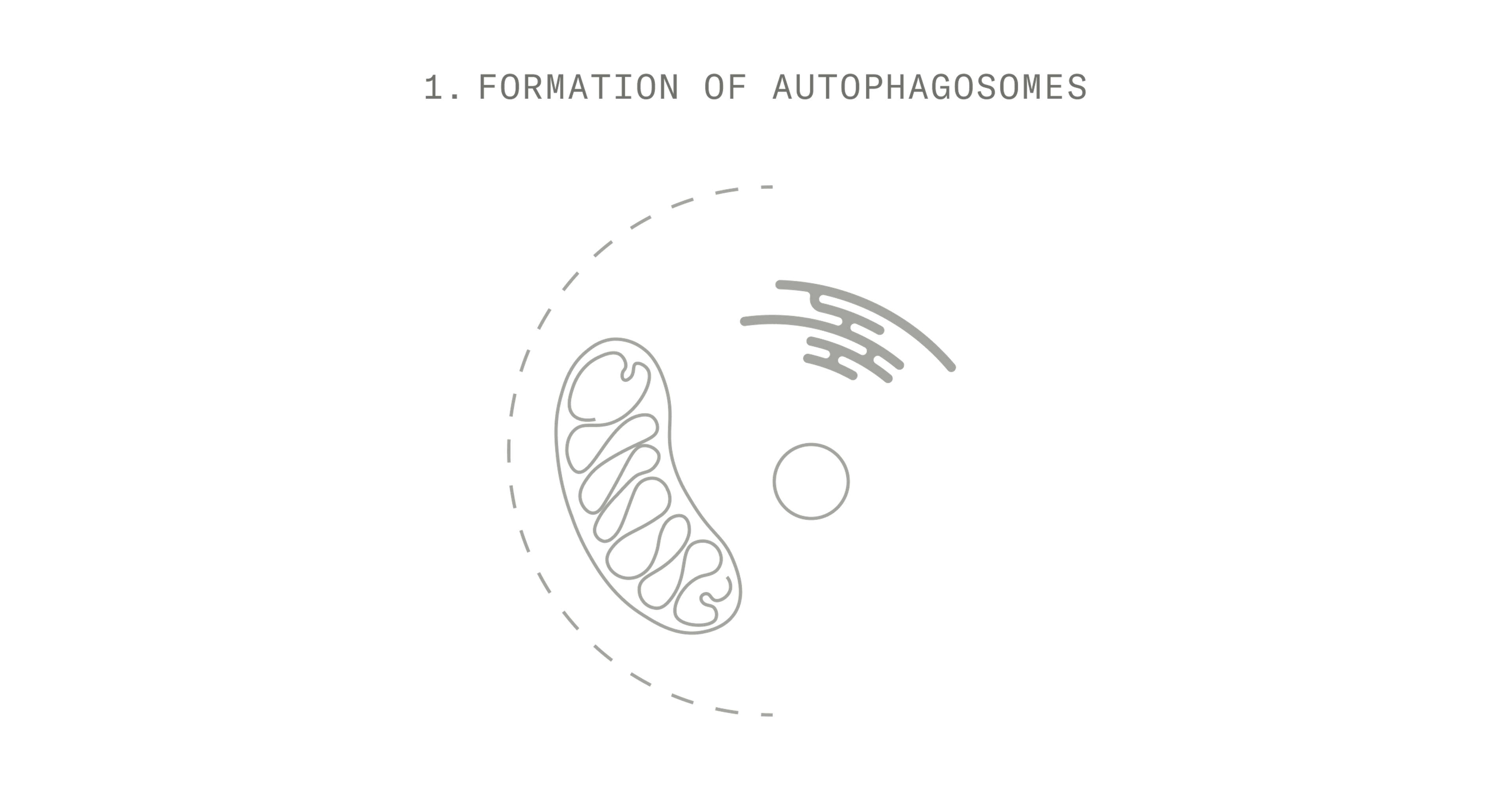
1. Initiation
The first stage of autophagy is initiation. In this stage, a range of autophagy-stimulating signals are sent to promote the formation of autophagosomes. [5]Autophagosomes are vesicles that are newly formed during autophagy to engulf materials.[6] Phagophore nucleation is the next stage of the process.
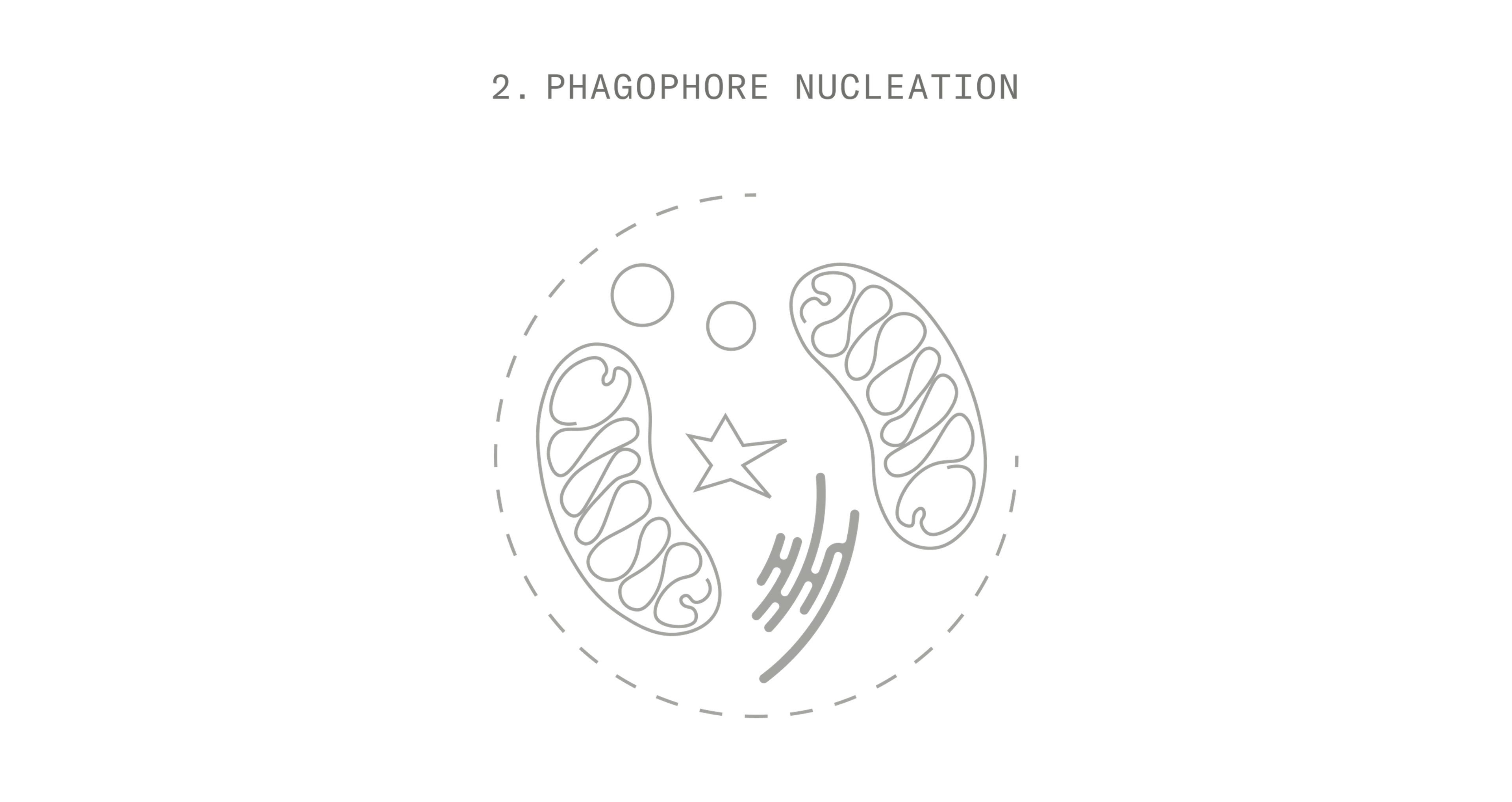
2. Phagophore nucleation
Stage two of autophagy is phagophore nucleation. At this stage, the initial structure that will be used to sequester materials is called the phagophore. After initiation, the membrane begins to expand.[7]

3. Elongation and autophagosome formation
The third stage of the process is elongation and autophagosome formation. During this stage, the phagophore expands and the membrane bends to generate a spherical autophagosome. It is not clear what causes this to happen. The membrane wraps around the cargo inside, adjusting to fit the material.[8]
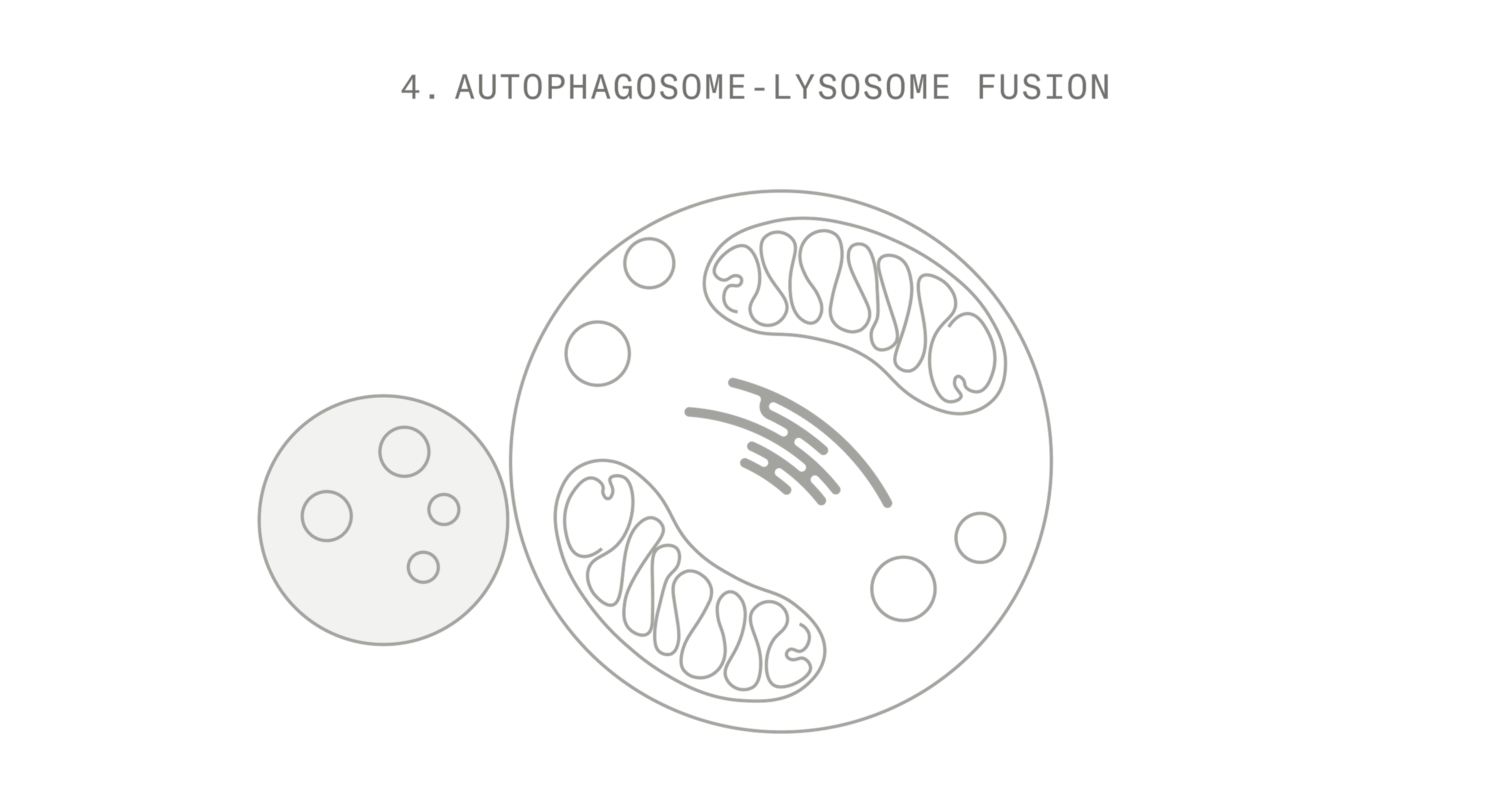
4. Autophagosome-lysosome fusion
Autophagosome-lysosome fusion is the fourth stage of this process. At this point, the phagophore fully surrounds the cargo contained in a structure called the lysosome - a type of organelle that contains degradative enzymes. [9]
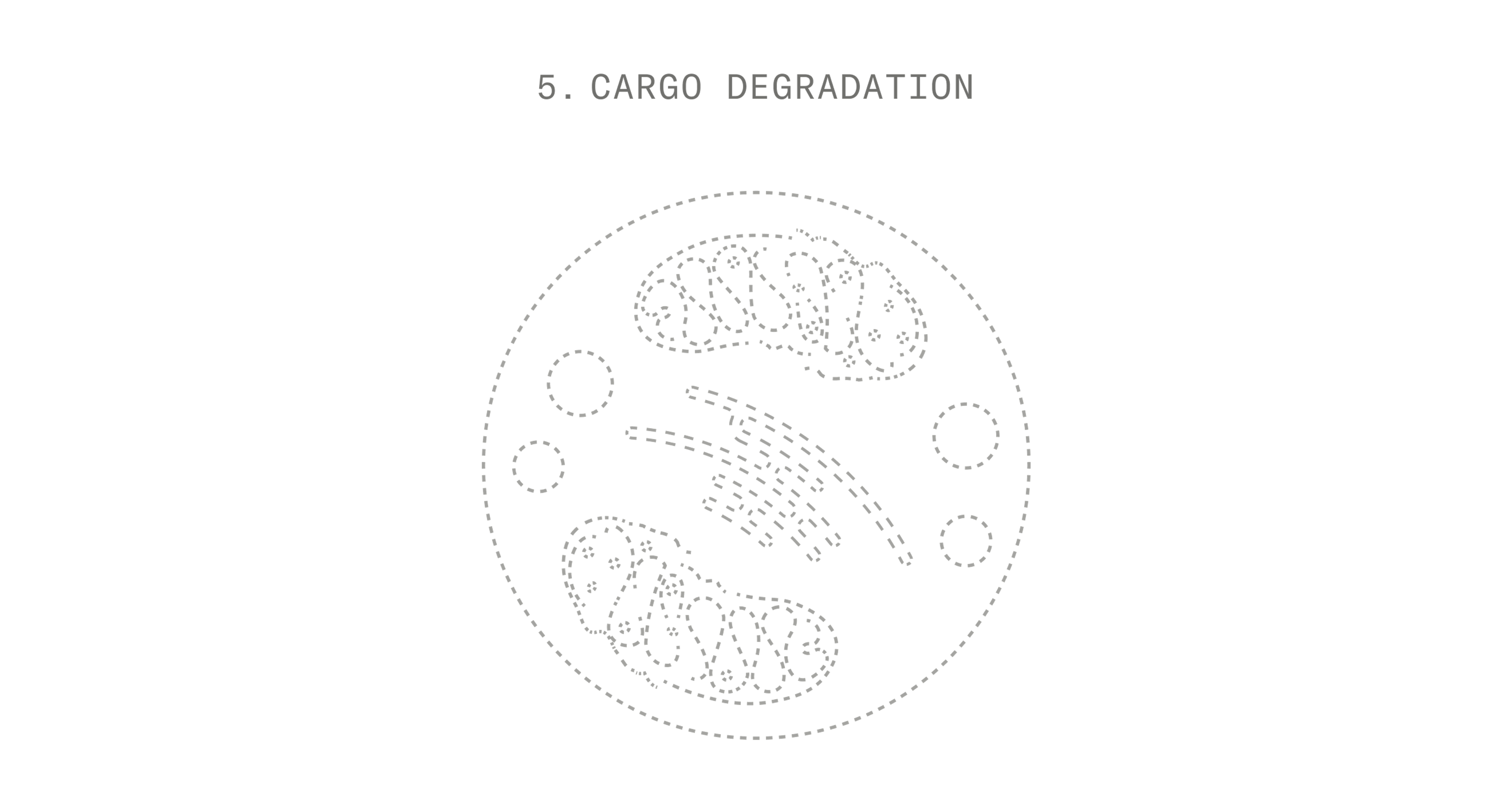
5. Cargo degradation
The final stage of autophagy is cargo degradation. In this stage, enzymes degrade the autophagic cargo. This process generates nutrients that are released into the cell and reused.

Final words
Autophagy plays a crucial role in preserving health by enabling cells to self-digest and renew. Autophagic dysfunction has been linked to numerous conditions, such as cancer, neurodegeneration, microbial infection, and the aging process[10]. Understanding the five stages of autophagy is a key part of understanding how good health may be maintained with age. The potential to therapeutically modulate autophagy offers exciting prospects for combating various diseases.
References
- ↑
Cao W, Li J, Yang K, Cao D. An overview of autophagy: Mechanism, regulation and research progress. Bull Cancer. 2021 Mar;108(3):304-322. doi: 10.1016/j.bulcan.2020.11.004. Epub 2021 Jan 8. PMID: 33423775.
- ↑
Mizushima N, Komatsu M. Autophagy: renovation of cells and tissues. Cell. 2011;147:728–741.
- ↑
Lin MG, Hurley JH. Structure and function of the ULK1 complex in autophagy. Curr Opin Cell Biol. 2016 Apr;39:61-8. doi: 10.1016/j.ceb.2016.02.010. Epub 2016 Feb 27. PMID: 26921696; PMCID: PMC4828305.
- ↑
Mizushima N, Klionsky DJ. Protein turnover via autophagy: implications for metabolism. Annu Rev Nutr. 2007;27:19–40.
- ↑
Mizushima N. The role of the Atg1/ULK1 complex in autophagy regulation. Curr Opin Cell Biol. 2010 Apr;22(2):132-9. doi: 10.1016/j.ceb.2009.12.004. Epub 2010 Jan 6. PMID: 20056399.
- ↑
Nakatogawa H. Mechanisms governing autophagosome biogenesis. Nature reviews Molecular cell biology. 2020 Aug;21(8):439-58.
- ↑
He C, Klionsky DJ. Regulation mechanisms and signaling pathways of autophagy. Annu Rev Genet. 2009;43:67-93. doi: 10.1146/annurev-genet-102808-114910. PMID: 19653858; PMCID: PMC2831538.
- ↑
Hailey DW, Rambold AS, Satpute-Krishnan P, Mitra K, Sougrat R, Kim PK, and Lippincott-Schwartz J. Mitochondria supply membranes for autophagosome biogenesis during starvation. Cell 2010;141: 656–667.
- ↑
Parzych KR, Klionsky DJ. An overview of autophagy: morphology, mechanism, and regulation. Antioxid Redox Signal. 2014 Jan 20;20(3):460-73. doi: 10.1089/ars.2013.5371. Epub 2013 Aug 2. PMID: 23725295; PMCID: PMC3894687.
- ↑
Mizushima N, Levine B, Cuervo AM, Klionsky DJ. Autophagy fights disease through cellular self-digestion. Nature. 2008 Feb 28;451(7182):1069-75. doi: 10.1038/nature06639. PMID: 18305538; PMCID: PMC2670399.
Authors
Jinan Banna, PhD, RD
Author
Julie Faitg, Phd
Reviewed by


